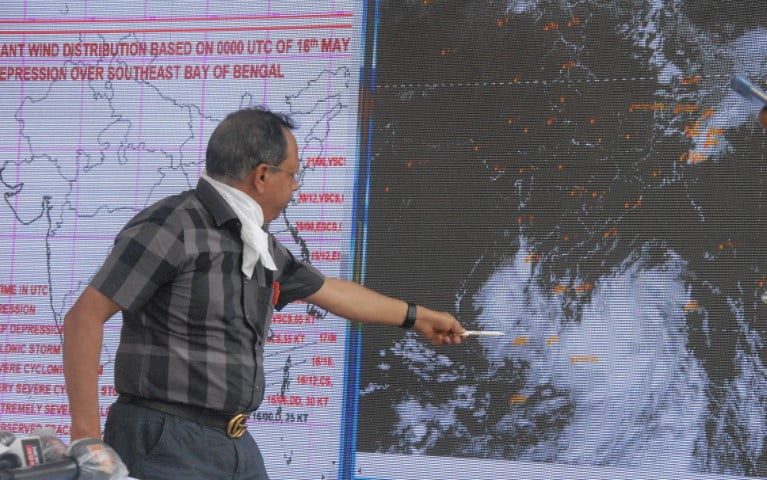Bhubaneswar: Helming a fight against a marauding cyclone is no easy job. And when you are battling two calamities simultaneously, the task becomes nothing but Herculean. Odisha’s special relief commissioner Pradeep Kumar Jena has been doing just that for the last seven days. No wonder, he was breathing easy on Wednesday evening as Amphan made its landfall between Digha in neighbouring West Bengal and Hatiya Islands in Bangladesh.
“Hopefully I can get some sleep tonight,” he said, sounding relieved that the eastern state, which was pummelled by cyclone Fani a year ago, was spared of another round of storm mayhem. Cut to Tuesday night and ‘relieved’ could have been the last word on his mind. “I was very tense for the last three days. I know it is never easy to predict summer cyclones and hence was keeping my fingers crossed,” he told Odisha Bytes.
Just when the countdown began on Tuesday night, the US Navy’s Joint Typhoon Warning Centre forecast that the landfall could be close to Digha and Balasore would be in the core zone of the disaster sent shock waves among those familiar with the havoc 270 kmph wind speed could wreak (the wind speed in the October 29, 1999 supercyclone was said to be devastating 260 kmph).

“The social media went berserk at around 2 am and I got really worried. I repeatedly called IMD DG Mrutyunjaya Mohapatra and he kept insisting the cyclone would not get diverted from its path. That
surely was reassuring,” he revealed. However, a cyclone going off course or doing a re-curve is always a possibility. And those who have studied cyclones know it well enough. “There was no question of taking chances. I spoke to NDRF DG Satya Pradhan, who is a batchmate, and he was always willing to lend a helping hand. I called up the concerned district collectors and especially asked Balasore, Bhadrak, Jagatsinghpur and Kendrapara collectors to remain in full readiness for any eventuality,” Jena added.
The adrenaline rush was not because the state was inadequately prepared but for the devastation Nature can cause inspite of the administration’s best efforts. Starting May 13, the government had
swung into action and in tune with the Centre’s advisory begun formulating the draft for an “integrated response to pandemics and natural disasters”. “The first thing we did was identify 567 permanent cyclone shelters that were not being used as COVID-19 quarantine centres. In addition, we identified 7092 other structures which could be used to shelter evacuees. So, in all we were ready to house around 11 lakh people, if required, by maintaining social distancing norms. We also roped in women self-help groups to do the catering,” the SRC shared.
The government also put in place at least 100 teams from Odisha Forest Development Corporation, 370 groups of labourers (each having 10 members) to clear roads, 600 DG sets, 407 drinking water tankers and 200 mobile tankers etc to deal with a calamitous situation, officials said. “We also shifted 1885 pregnant women to hospitals to ensure they faced no problems in case the cyclone hit the state,” an officer pointed out.
While lessons from previous disasters, especially Fani (2019), helped Jena & Co to prepare for Amphan, what is appreciable is the swiftness with which they shifted gears to brace up for the cyclone amid the corona crisis. Possibly for the first time, disaster-prone Odisha was up against a double whammy. Fortunately, it has survived Amphan with bruises. Hopefully, it will soon effectively overcome the COVID-19 pandemic as well.


